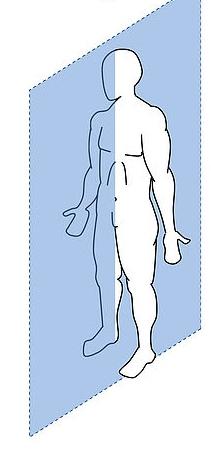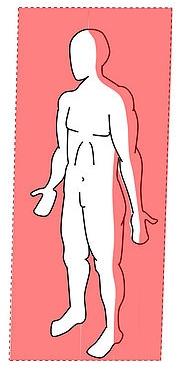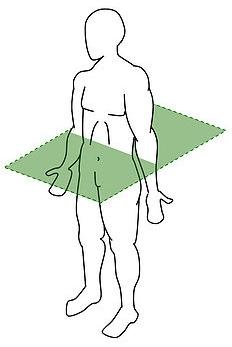Anatomical Orientation And Directions! Trivia Facts Quiz

NPTI-COLORADO: Training & Anatomy Manual
- 1.
What anatomical position is toward the front, pertaining to the front?
- A.
Inferior
- B.
Posterior
- C.
Anterior
- D.
Superior
Correct Answer
C. AnteriorExplanation
The correct answer is "Anterior". Anterior refers to a position or structure that is towards the front. In anatomical terms, it is the opposite of posterior, which refers to a position or structure that is towards the back. Superior and inferior, on the other hand, refer to positions or structures that are above or below, respectively. Therefore, out of the given options, only "Anterior" accurately describes a position or structure that is towards the front.Rate this question:
-
- 2.
What anatomical position is toward the back, pertaining to the rear?
- A.
Posterior
- B.
Anterior
- C.
Superior
- D.
Inferior
Correct Answer
A. PosteriorExplanation
The anatomical position that is toward the back and pertains to the rear is called the posterior position. This term is commonly used in anatomy to refer to structures or locations that are located towards the back of the body. It is the opposite of the anterior position, which refers to structures or locations towards the front of the body. Superior and inferior positions, on the other hand, refer to structures or locations that are above or below a reference point, respectively.Rate this question:
-
- 3.
What anatomical position is above another structure, toward the head?
- A.
Inferior
- B.
Posterior
- C.
Anterior
- D.
Superior
Correct Answer
D. SuperiorExplanation
Superior is the correct answer because it refers to a position that is above another structure and towards the head. In anatomical terms, superior means towards the upper part of the body or closer to the head. Therefore, if one structure is positioned superior to another, it means it is located above the other structure in relation to the body.Rate this question:
-
- 4.
What anatomical position is below another structure, toward the feet?
- A.
Inferior
- B.
Superior
- C.
Anterior
- D.
Posterior
Correct Answer
A. InferiorExplanation
The term "inferior" refers to a position that is below another structure and towards the feet. In anatomical terms, it indicates a lower position in relation to another structure. Therefore, "inferior" is the correct answer to the question.Rate this question:
-
- 5.
What anatomical position is away from the mid-line, on or toward the outside?
- A.
Lateral
- B.
Medial
- C.
Proximal
- D.
Distal
Correct Answer
A. LateralExplanation
Lateral refers to a position that is away from the mid-line and towards the outside. It is the opposite of medial, which refers to a position towards the mid-line. Proximal and distal, on the other hand, describe positions in relation to the center of the body or a specific point of reference.Rate this question:
-
- 6.
What anatomical position is toward the mid-line of the body, pertaining to the middle or center?
- A.
Proximal
- B.
Distal
- C.
Lateral
- D.
Medial
Correct Answer
D. MedialExplanation
Medial refers to a position that is closer to the midline of the body or towards the center. It is the opposite of lateral, which refers to a position away from the midline. In anatomical terms, medial is used to describe structures that are closer to the midline of the body, such as the heart being medial to the lungs.Rate this question:
-
- 7.
What anatomical position is closest to the trunk, or root of a limb?
- A.
Medial
- B.
Proximal
- C.
Distal
- D.
Lateral
Correct Answer
B. ProximalExplanation
The anatomical position that is closest to the trunk or root of a limb is proximal. Proximal refers to a position that is closer to the center of the body or the point of attachment of a limb, as opposed to distal which refers to a position that is further away. In this case, proximal is the correct answer because it indicates the position closest to the trunk or root of a limb. Medial and lateral refer to positions closer to the midline or further away from the midline, respectively, and are not directly related to the proximity to the trunk or root of a limb.Rate this question:
-
- 8.
What anatomical position is situated away from the mid-line or center of the body, or root of a limb?
- A.
Proximal
- B.
Lateral
- C.
Distal
- D.
Medial
Correct Answer
C. DistalExplanation
Distal refers to a position that is situated away from the mid-line or center of the body, or root of a limb. It is used to describe a body part that is further away from the point of reference. For example, the fingers are distal to the wrist, as they are located further away from the center of the body.Rate this question:
-
- 9.
What anatomical position is closer to the surface of the body, more toward the surface of the body than another structure?
- A.
Deep
- B.
Prone
- C.
Supine
- D.
Superficial
Correct Answer
D. SuperficialExplanation
The term "superficial" refers to a position that is closer to the surface of the body compared to another structure. It indicates that the structure is not deep within the body but rather located near the outer layers. In this context, "superficial" is the correct answer as it best describes a position that is more towards the surface of the body.Rate this question:
-
- 10.
What anatomical position is farther from the surface of the body, relatively deeper into the body than another structure?
- A.
Deep
- B.
Prone
- C.
Superficial
- D.
Supine
Correct Answer
A. DeepExplanation
The term "deep" refers to a position that is farther from the surface of the body and relatively deeper into the body than another structure. It implies that the structure is located internally, away from the body's surface. In contrast, "superficial" refers to a position closer to the surface of the body. "Prone" and "supine" refer to body positions (lying face down and lying face up, respectively) and are not related to depth.Rate this question:
-
- 11.
What anatomical position is lying face downward?
- A.
Superficial
- B.
Supine
- C.
Prone
- D.
Deep
Correct Answer
C. ProneExplanation
The anatomical position of lying face downward is called prone. In this position, the individual's chest and abdomen are facing the ground, while the back is facing upward. The term "prone" is commonly used in medical and anatomical contexts to describe this specific body position.Rate this question:
-
- 12.
What anatomical position is lying on the back, face upward?
- A.
Prone
- B.
Supine
- C.
Deep
- D.
Superficial
Correct Answer
B. SupineExplanation
The correct answer is Supine. In anatomical position, supine refers to lying on the back with the face upward. This position allows for easy examination of the front of the body and is commonly used during medical procedures and examinations. The term "prone" refers to lying face down, while "deep" and "superficial" do not describe a specific anatomical position.Rate this question:
-
- 13.
What type of plane divides the body into right and left halves?
Correct Answer
SagittalExplanation
The plane that divides the body into right and left halves is called the sagittal plane. This plane runs vertically from front to back and divides the body into two symmetrical halves. It allows for the examination of structures and organs in relation to their left and right sides.Rate this question:
- 14.
What type of plane divides the body into anterior and posterior halves?
Correct Answer
FrontalExplanation
The frontal plane is a type of plane that divides the body into anterior and posterior halves. This plane runs from side to side, dividing the body into front and back sections. It is also known as the coronal plane.Rate this question:
- 15.
What type of plane divides the body into superior and inferior halves?
Correct Answer
TransverseExplanation
A transverse plane is a type of plane that divides the body into superior (upper) and inferior (lower) halves. This plane runs horizontally, perpendicular to the long axis of the body. It separates the upper part, including the head, neck, and upper limbs, from the lower part, including the abdomen, pelvis, and lower limbs. This division allows for a clear distinction between the upper and lower regions of the body, helping in anatomical and medical descriptions and references.Rate this question:
- 16.
Which one do you like?
- A.
Option 1
- B.
Option 2
- C.
Option 3
- D.
Option 4
Correct Answer
A. Option 1 -
- 17.
Which one do you like?
- A.
Option 1
- B.
Option 2
- C.
Option 3
- D.
Option 4
Correct Answer
A. Option 1 -
- 18.
Is [your statement here] true or false?
- A.
True
- B.
False
Correct Answer
A. TrueExplanation
The given question asks whether the statement is true or false. The answer provided is "True," indicating that the statement is indeed true. However, without knowing the specific statement mentioned in the question, it is impossible to provide a more detailed explanation.Rate this question:
-
- 19.
Which one do you like?
- A.
Option 1
- B.
Option 2
- C.
Option 3
- D.
Option 4
Correct Answer
A. Option 1 -
- 20.
Which one do you like?
- A.
Option 1
- B.
Option 2
- C.
Option 3
- D.
Option 4
Correct Answer
A. Option 1 -
- 21.
Which one do you like?
- A.
Option 1
- B.
Option 2
- C.
Option 3
- D.
Option 4
Correct Answer
A. Option 1 -
Quiz Review Timeline +
Our quizzes are rigorously reviewed, monitored and continuously updated by our expert board to maintain accuracy, relevance, and timeliness.
-
Current Version
-
Jan 23, 2023Quiz Edited by
ProProfs Editorial Team -
Sep 08, 2018Quiz Created by
Alexunger

















